At a glance
Expert’s Rating
Pros
- Comfortable design
- Nice, bright display
- Excellent fitness and health tracking
- Smooth performance and friendly UI
Cons
- No battery life improvement
- Needs 3 apps
- Price bump
Our Verdict
Need an up-to-date smartwatch that’s fast, boasts a great screen and tons of apps? You’ll love what the Samsung Galaxy Watch 8 brings to the table, but it’s far from being the major update Samsung needed to stay one step ahead of the competition.
Price When Reviewed
This value will show the geolocated pricing text for product undefined
Best Pricing Today
Price When Reviewed
From $349.99
Best Prices Today: Samsung Galaxy Watch 8
$349.99
It might have a new (albeit divisive) look, but it’s largely business as usual with the Samsung Galaxy Watch 8.
We’re in a very strange place with the Samsung Galaxy Watch range. In a sense, Samsung’s smartwatches have never been better, and with four solid options currently available, ranging from the budget-friendly Samsung Galaxy Watch FE to the high-end Samsung Galaxy Watch Ultra, it’s a great time to be a fan of all things Samsung.
The problem is that when viewed up close, very little has changed over the last few years.
I absolutely adored the Samsung Galaxy Watch 4 when that device came to market with its Wear OS overhaul and a bright future ahead of it, but after having the Samsung Galaxy Watch 8 on my wrist for about two weeks, I can’t say that all too much has changed in the time since.
It means that unless you’re a devout Samsung user, you might want to see what else is out there from the likes of Google Pixel, OnePlus, Huawei and others. This is arguably the last time that the company can rest on its laurels before it becomes a much bigger issue.
Design & Build
- New, chunkier chassis echoes the Galaxy Watch Ultra
- Slimmer build allows for a more comfortable fit
- Dynamic Lug system can be a bit finicky
The only area where the Samsung Galaxy Watch 8 has really taken a step in a new direction is with its design. Well, I say new in that it’s a different approach for the mainline watch, but it’s really an adaptation of the square-circle (aka ‘squircle’) design language of the Galaxy Watch Ultra.
far more comfortably than any of Samsung’s wearables before it
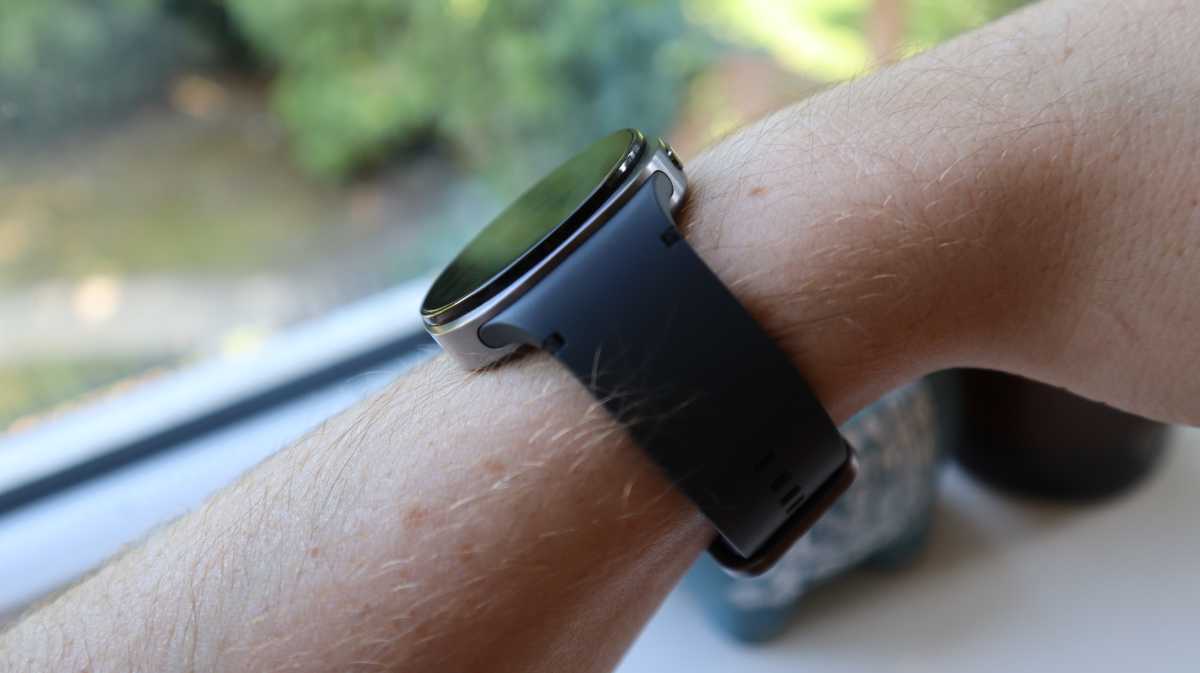
Thomas Deehan / Foundry
Now, instead of having the chassis form a perfect circle around the screen, there’s a bumper (Samsung calls it a ‘cushion’) protruding from the watch that is more prominent at the corners, making the watch look more like a rounded-off square.
Speaking to fellow tech journalists, it’s clear that the design is quite divisive, but much to my own surprise, I actually quite like the look of it.
I love a good two-tone colourway and the silver chassis only serves to heighten the black of the bezel and the display, especially if you have a watch face with a black background. The Watch 8 also fits my wrist far more comfortably than any of Samsung’s wearables before it, and that’s thanks to two key changes.
While it might be hard to tell just from the pictures alone, the Galaxy Watch 8 is actually 11% slimmer than the Galaxy Watch 7, and while that might not sound like much, it helps prevent the watch from catching on your clothing, which is more than I can say for some of the heftier watches I’ve tried over the years. There’s also a new system for attaching watch straps, which Samsung calls the Dynamic Lug.
On the one hand, I actually think that the Dynamic Lug is more difficult to attach and remove than before (it’s not supposed to be, of course), but it closes the prominent gap that used to exist between your wrist and where the strap would connect on previous Galaxy Watches.
It’s just a far more comfortable design overall, which is great if you plan on wearing the device overnight.
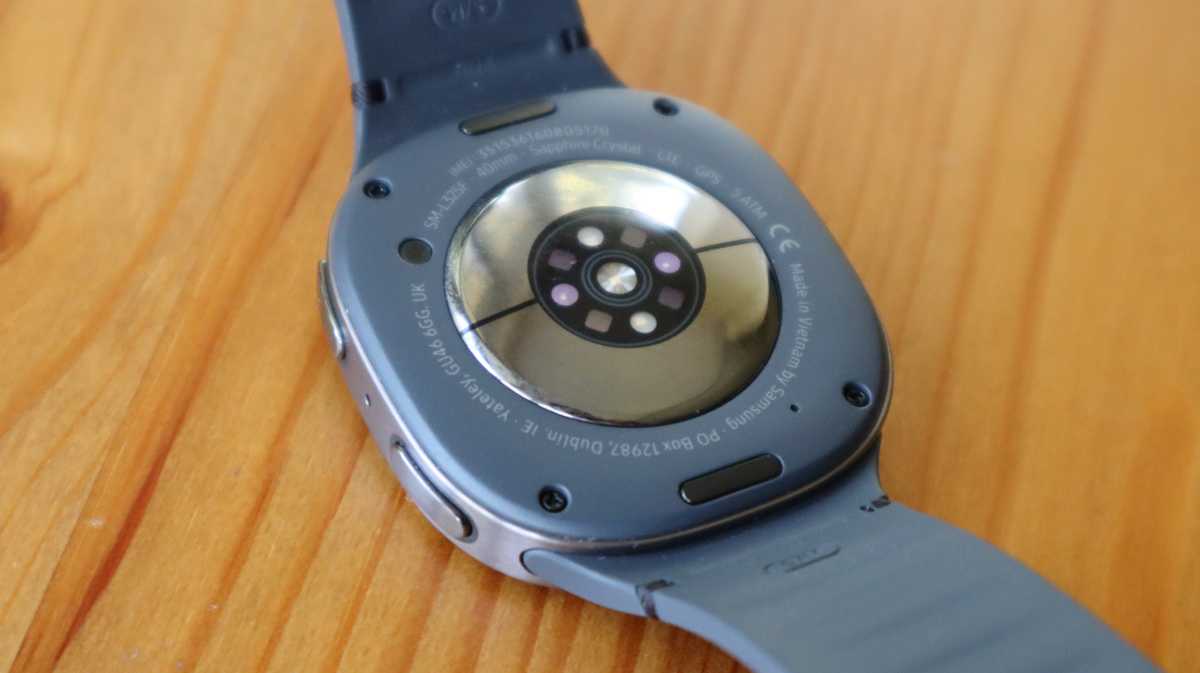
Thomas Deehan / Foundry
Even though it is slimmer, the watch is no less ready for the elements with an official IP68 rating alongside the ability to be submerged in a body of water up to 5ATM (50 metres).
In the time I’ve been using the watch, beyond a slight bit of dust collecting around the raised segments of the bezel, the device hasn’t picked up a single scratch, which is always nice to see.
The one thing I will say that’s a bit of a disappointment is that with the added real estate of the new chassis, I had hoped that it might bring about the space for a much larger battery but that hasn’t materialised here, which makes the shift feel more performative than substantial.
Screen & Audio
- The brightest display of any standard Galaxy Watch
- Very easy to read text, even on the smaller 40mm model
- Audio playback sounds good, but not as loud as the competition
Just like with previous generations of Galaxy Watch, there are two sizes available, 40- and 44mm, with the main allure of the latter being the slightly larger 1.47-inch display.
While I do typically go for larger size options, I’ve been using the 40mm model over the course of this review and I must say that I never felt shortchanged with the smaller 1.34-inch display.
it just makes for a far better visual experience when out and about
Text is very easy to read, so I never had to squint to see incoming notifications, and I always felt satisfied diving into workout data on the watch itself instead of using the larger display of my phone. Part of what makes the experience this time around is a massive bump to the overall brightness of the screen.
You might assume you get a bigger screen with the Galaxy Watch 8 Classic, but it’s also 1.34-inch and instead uses the larger body for a rotating bezel.
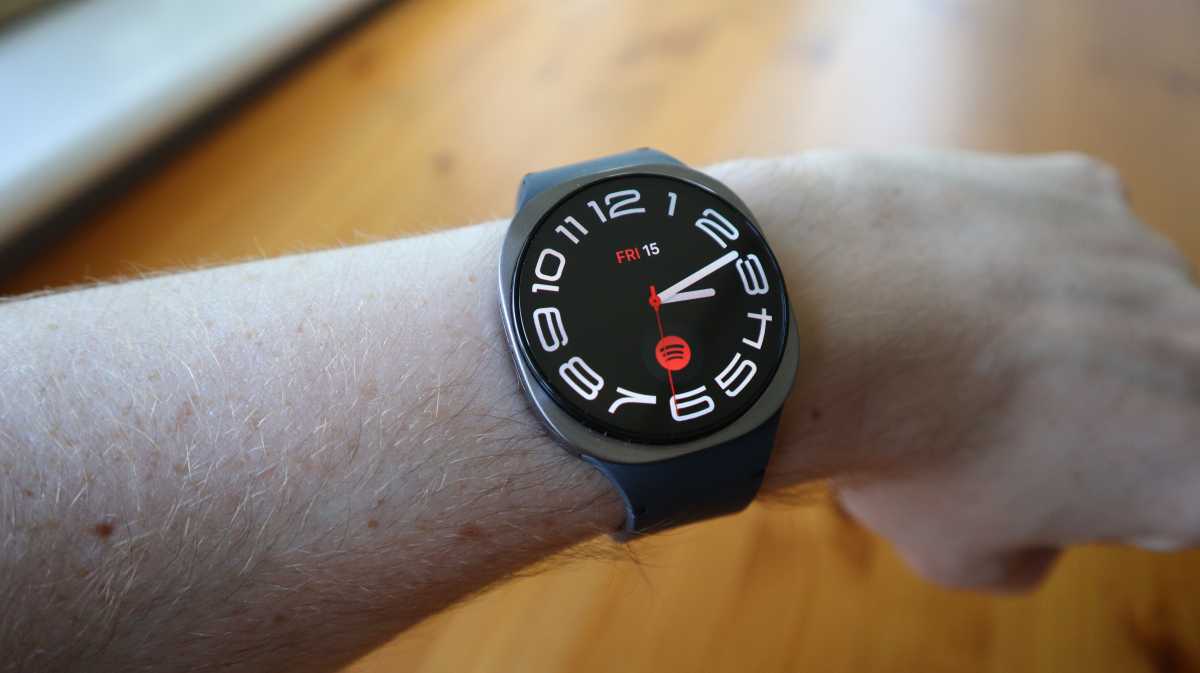
Thomas Deehan / Foundry
Compared to the Galaxy Watch 7, the Watch 8 is now 50% brighter with a peak brightness of 3000 nits. That’s the same brightness level as the pricier Galaxy Watch Ultra, and it just makes for a far better visual experience when out and about. Not only do Samsung’s watch faces look better than ever, I never had any issues with getting a quick glance at the time when walking outside, especially with the always-on mode toggled.
On the audio side of things, if you don’t have a pair of earbuds or headphones to hand, then you can use the built-in speakers to play music and podcasts directly on the watch itself. While it doesn’t get quite as loud as the Garmin Venu X1 I reviewed before this, I was quite impressed with the sound quality on offer.
I’ve been using the Tony Hawk’s Pro Skater 3+4 soundtrack to fuel many of my most recent workouts and when taking that for a spin, the Watch 8’s speakers did a great job of highlighting the vocals and the percussion of each track, regardless of genre, so kudos to Samsung’s engineering on this front.
Of course, that quality also extends to taking calls on the watch, if your smartphone is out of reach.
Software & Features
- Wear OS has never felt or looked better
- Having Gemini on your wrist is a game-changer
- The set-up process needs refining
One of the big software changes for this year is that the Galaxy Watch 8 has officially done away with the Google Assistant, as Google Gemini takes its place. Admittedly, this shift will also be made available on older Galaxy Watches and many rivals, but this represents the first of the bunch that will have Google’s latest on AI right out of the box.
Having suffered for years through the lacklustre presence of Siri on the Apple Watch, which was never used for much more than setting timers or asking for updates on the weather, having Gemini readily available on your wrist feels like Samsung has just leapfrogged Apple by several generations.
I’ve been able to use Gemini for all sorts, ranging from getting fashion advice based on the weather to getting suggestions for recipes after explaining which ingredients I have left in my fridge. I was able to get answers to all of it at great speed, too.
In both AI requests and everyday use, I’ve felt the Exynos W1000 chipset going above and beyond to keep up. It’s just excellent performance across the board, and a key reason why the Galaxy Watch 8, at its core, is a great smartwatch. This is despite being the same chip as the Galaxy Watch 7.
It no longer feels like a compromised experience when I take off my Apple Watch
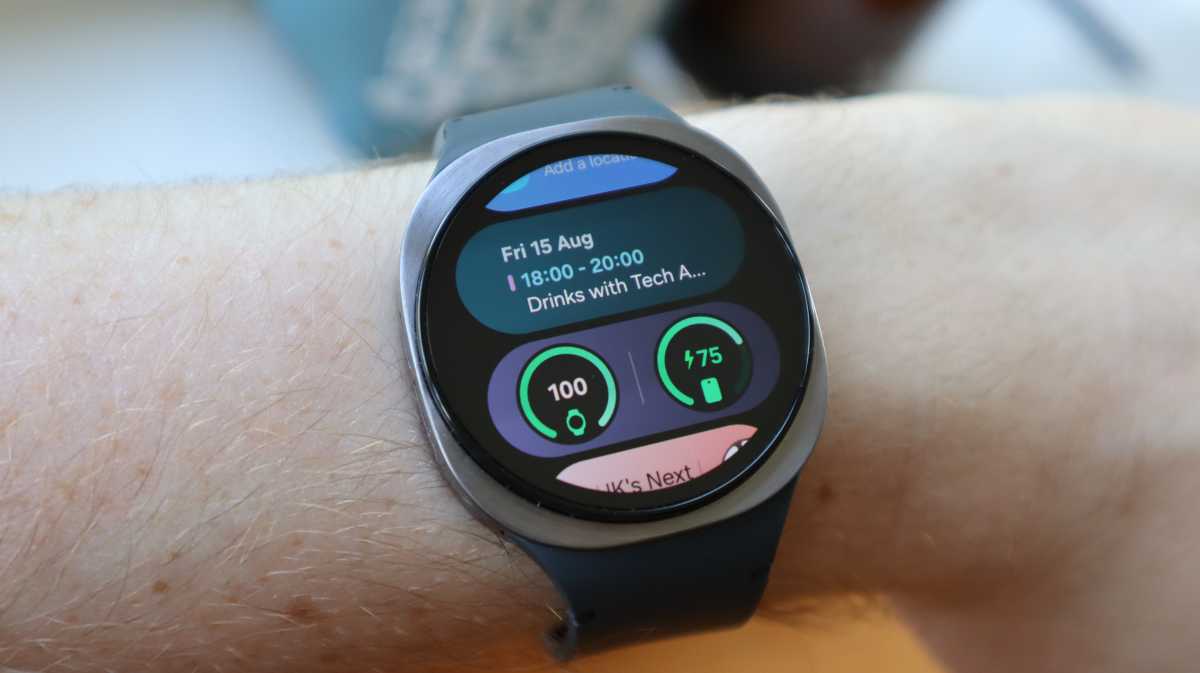
Thomas Deehan / Foundry
All of this just complements the feeling that Wear OS has never been better. With Wear OS 6 (and Samsung’s One UI 8 Watch overlay) it no longer feels like a compromised experience when I take off my Apple Watch and move over to Samsung’s latest wearable for a review – I can just enjoy what Google has been able to put together here, and in some cases, there are a few features that I wish Apple would poach.
While it certainly isn’t new, I still love the Tiles feature on Wear OS that gives you quick access to key apps just by swiping left from the watch face. Speaking to my own personal use cases, it allows me to dive more quickly into workout tracking, changing a song on Spotify and even getting a quick look at my calendar events for the week.
It’s just a great feature to have, and scrolling through the tiles with the digital rotating bezel is a breeze.
I know that there are plenty of diehard fans out there who prefer the older physical rotating bezel, and as a result will probably seek out the Samsung Galaxy Watch 8 Classic instead, but I had no issues with this digital alternative. It’s responsive with nice haptic feedback, and it feels far more elegant to use than just swiping up and down endlessly to get through menus.
The one aspect of Samsung’s software that doesn’t feel quite so refined is on the smartphone side of things. Don’t get me wrong, the Samsung Health app has a wonderful aesthetic and is enjoyable to use, but the initial set-up for the Galaxy Watch 8 requires downloading three apps in total, which can be a real hassle when you change phones as often as I do or for people who aren’t tech-savvy.
It would be great to see it all streamlined into just one app – I’ve never felt the need to dive into the Galaxy Wearable app after the initial set-up.
Fitness & Health Tracking
- New Antioxidant Index
- Reliable heart rate data
- Some features only work with a Samsung phone
If there’s one area where I can’t fault Samsung’s work, it’s in fitness tracking. The Galaxy Watches have always been great companions for a trip to the gym or the local park run, and the Galaxy Watch 8 is no exception.
You can track everything from hiking in the great outdoors to snowboarding on the range. It’s great to see, but if you are just starting out on your fitness journey, then you’ll very much appreciate the Running Coach that’s on board.
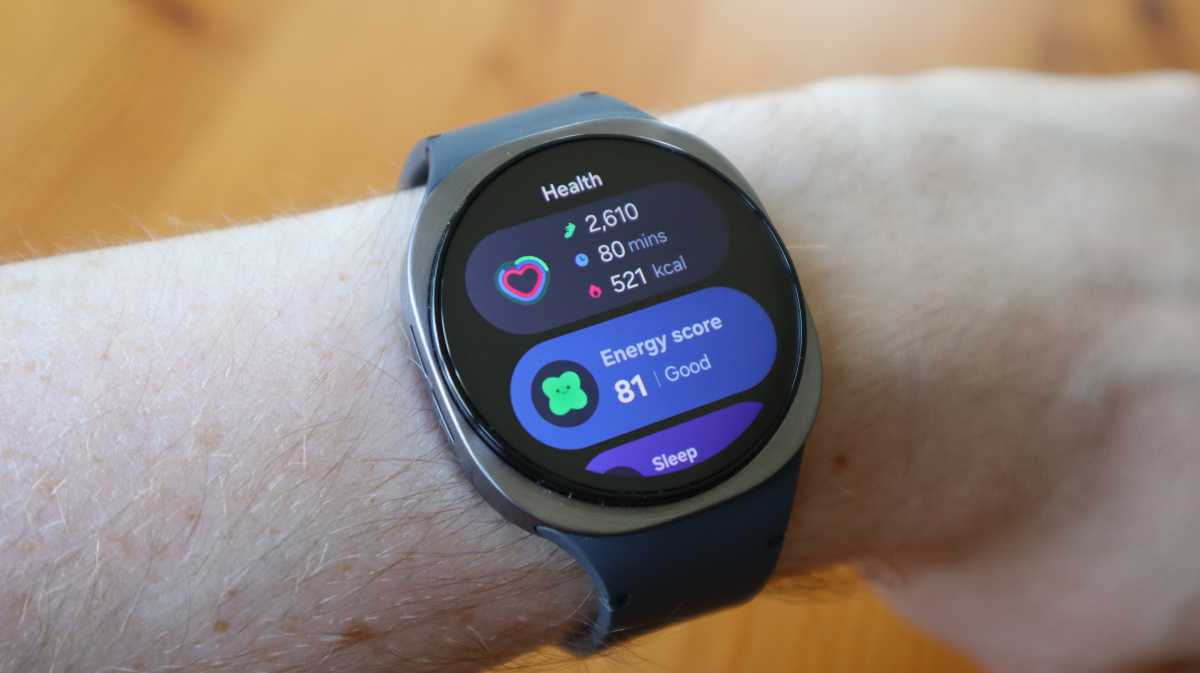
Thomas Deehan / Foundry
This is great if you’re finding your footing and you need a bit of guidance to help you set realistic goals and avoid injuring yourself by overdoing things.
It’s a wonderful feature to have, particularly as I think that beginners tend to get forgotten about more often than not when it comes to fitness trackers, and it pairs well with the Galaxy Watch 8’s insistence on obtaining proper rest and recovery.
If you’ve had a particularly busy day or you haven’t managed to get a good night’s sleep then the watch (and the app) will let you know that it’s a good time to prioritise rest, much in the same vein as the Whoop Strap 5.0. You can also find out the ideal timeframe for getting to bed in a new feature known as ‘Bedtime guidance’. Accessible at any time throughout the day, this new feature gives you ample time to prepare your day around hitting that bedtime target, which I appreciate more than an alert in the evening that tells me it’s time to wind things down.
Given that rest is essential for any type of exercise but especially muscle growth, it is nice to see Samsung take the time here to give it just as much credence as all of the typical workout data you’d expect to see.
There’s also a new ‘Vascular load’ tracker that’s meant to keep an eye on the system that delivers blood throughout your body – a high vascular load means that you need to cut out unhealthy foods and do more to alleviate stress. Again, it’s handy to have and it just complements the idea of the Galaxy Watch 8 being a great tracker for your overall bill of health.
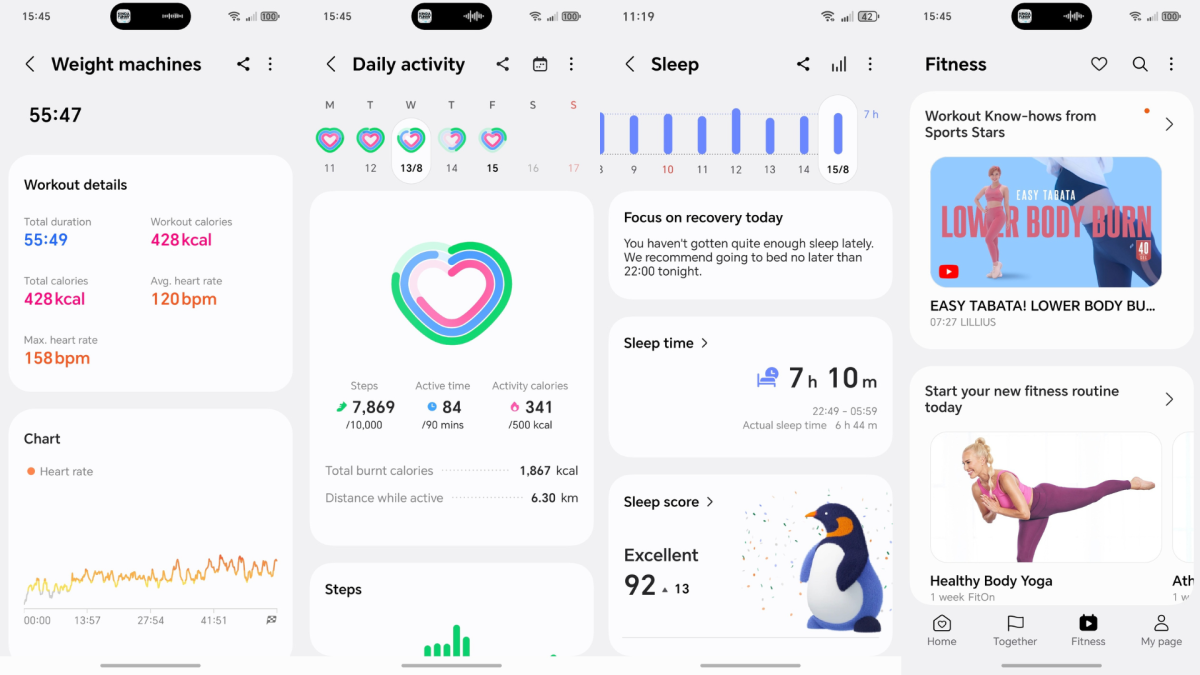
Thomas Deehan / Foundry
Speaking of that data, heart rate tracking on the Galaxy Watch 8 is fantastic. When taken for a spin alongside the Polar H10 chest-worn heart rate monitor, the two devices matched up almost like for like in their results. Oddly, we didn’t find the tracking on the Watch 8 Classic to be so accurate.
During two stints on the treadmill, the Galaxy Watch registered a peak that was only 1BPM above that of the Polar H10, which is fair within a margin of error, but the two were in sync in terms of the average heart rate, so you’ll get a realistic picture of how your heart is responding to each workout.
Samsung has added an Antioxidant Index, which essentially lets you know if you’re getting enough fruit and veg in your diet. While I do love to exercise, my diet is a bit lacking in this area and the Watch 8, to its credit, did call me out on it, although it’s hard to say how precise the readings are with the tracking itself still being in beta testing at the time of writing, so take it with a pinch of salt (The Verge tricked it with a Cheeze-It).
if you don’t have a Samsung phone to hand, you’ll be getting a limited experience
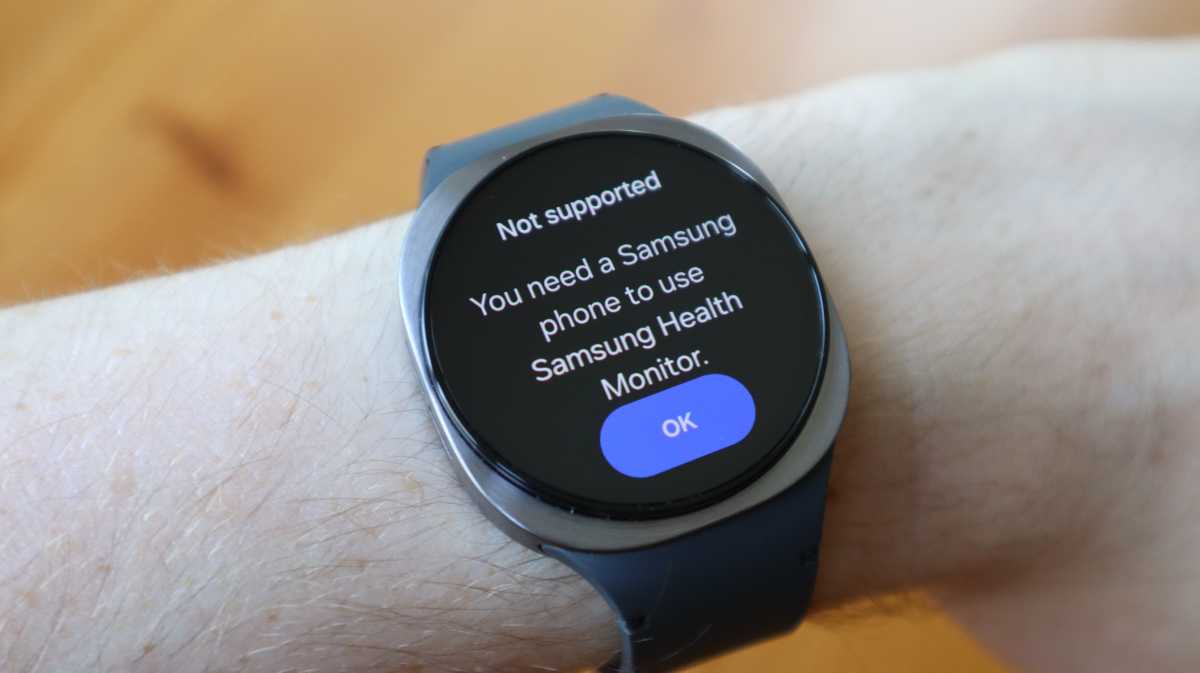
Thomas Deehan / Foundry
What is a shame is that, if you don’t have a Samsung phone to hand, you’ll be getting a limited experience on the Galaxy Watch 8. This isn’t anything new as it’s been an issue with previous Samsung watches, but it’s worth noting that you won’t be able to access ECG tracking for picking up heart arrhythmia, nor can you dive into the blood pressure tracking either.
All this means is that, if I were someone looking to buy a smartwatch and I didn’t use a Galaxy phone, I’d probably be tempted to go for something like the Garmin Venu X1 or the OnePlus Watch 3 instead.
Thankfully, GPS tracking is still solid on the Galaxy Watch, making use of a dual-band connection that’s not only quick to establish itself, but can also provide accurate results after the fact.
Battery Life & Charging
- Still really just one-day battery life
- The slight battery cell increase doesn’t make much of a difference
- Charging is speedy enough
As I mentioned earlier, I was really hoping that the main reason for the design change on the Galaxy Watch 8 was that it would allow for a larger battery to fill up the added space taken up the new chassis, and while that’s technically true, the upgrade is far less pronounced than what I had hoped it would it.
The 40- and 44mm models now pack a 325- and 435mAh cell respectively, up from 300- and 425mAh on the Galaxy Watch 7. As you can see, that’s not a huge increase and unfortunately, it does mean that the Galaxy Watch 8 stays firmly within that usual one-day of use trap that has plagued previous Galaxy watches.
Samsung is clearly lagging behind in this area
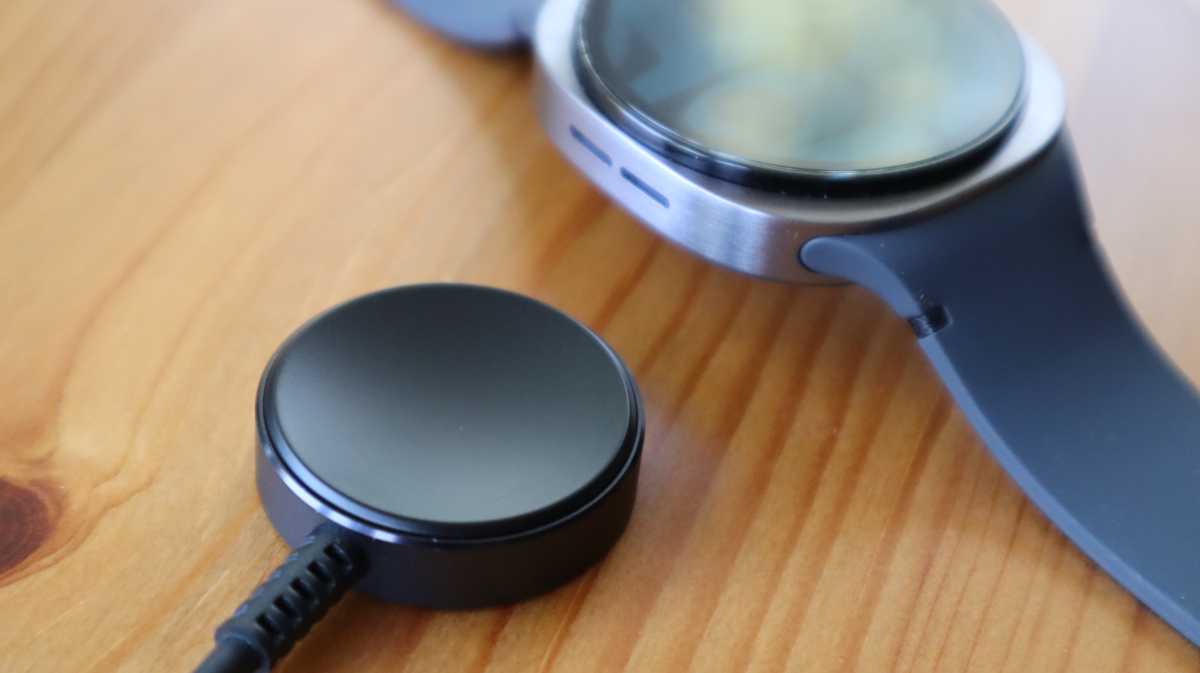
Thomas Deehan / Foundry
Admittedly, if you turn off the always-on display then you can get about a day and a half of use, but the experience just isn’t as fun (or as useful) without it. When I had the feature toggled, I got through about 22-hours of use, which included notifications, a GPS tracked walk, and sleep tracking, before the watch reached 36%.
Given that it’s now possible to get up to five days of use from the OnePlus Watch 3, Samsung is clearly lagging behind in this area. I find the experience of wearing a smartwatch far more engaging if I don’t also have to include it as a device that requires a daily charge, especially as I like being able to rely on such a watch for payments and messaging, if my phone ever reaches 0%.
Thankfully, the charging process isn’t too laborious. When the battery reached 6%, a 30-minute top-up was able to bring the Galaxy Watch 8 back to 65% which, under very conservative use, could still be enough to get you home before the end of the day.
If you do fully drain the battery to 0% then you will be waiting around a bit longer as I only got back 40% after 30 minutes, and it took a total of one hour and 19 minutes to reach 100%.
Price & Availability
At its cheapest, the 40mm Bluetooth only model of the Samsung Galaxy Watch 8 comes in at £319/$349.99, which makes it more affordable than the Pixel Watch 3 although it does represent a slight price increase over the £289/$299.99 tag of the Samsung Galaxy Watch 7.
There are four models in total, with Bluetooth and LTE options for both 40- and 44mm sizes, the most expensive of which caps out at £399/$429.99.
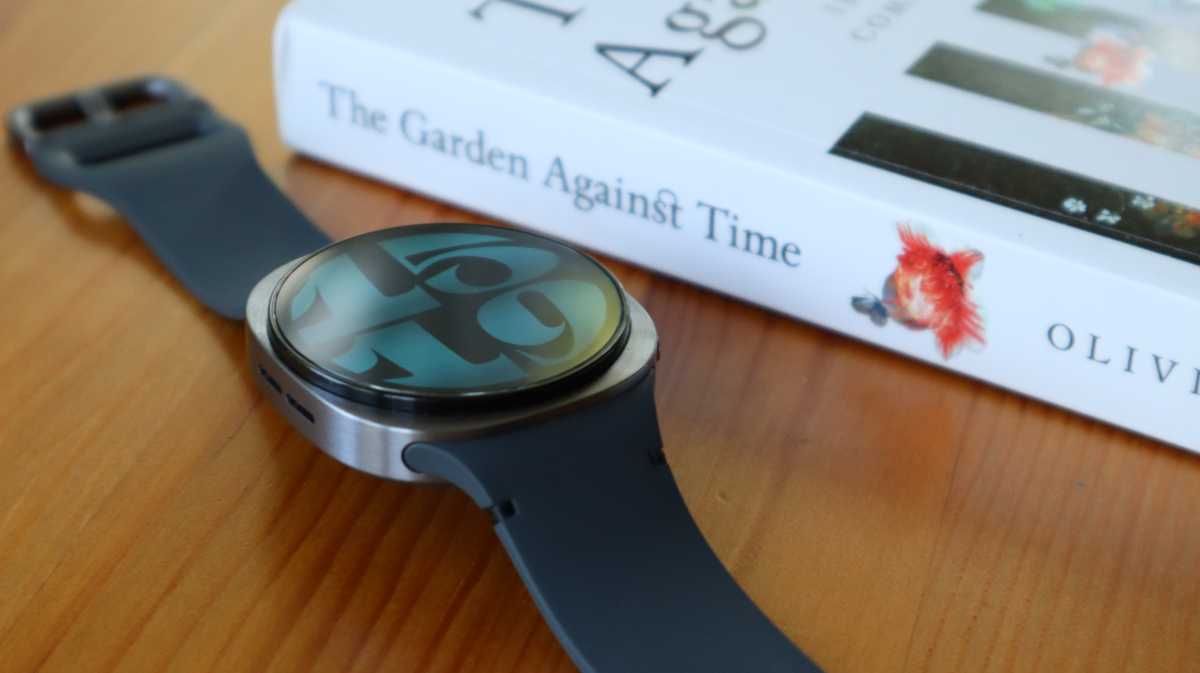
Thomas Deehan / Foundry
The biggest problem facing the Galaxy Watch 8 is that the excellent OnePlus Watch 3 now has a smaller 43mm option that’s available for far less at £269/$299.99, and if you want to stay within Samsung’s ecosystem then it isn’t too difficult to find the Galaxy Watch 7 for even cheaper than that.
The only major reasons why you would want to go for the Galaxy Watch 8 is to get the full four years of software support, to have the brighter display and full breadth of Samsung’s current crop of fitness tracking features.
Check our list of the best smartwatches to see our current top 10 recommendations.
Should you buy the Samsung Galaxy Watch 8?
If there’s one thing that I cannot stress enough about the Samsung Galaxy Watch 8, it’s that it is indeed a great smartwatch. Between Samsung’s well constructed take on Wear OS, the smooth performance and brilliance of the constantly refined fitness tracking features on offer, I have very much enjoyed my time with this device.
The problem is that the Galaxy Watch 7 was a great smartwatch, as was the Galaxy Watch 6, and the Galaxy Watch 5 (I could keep going).
The iterative updates of Samsung’s wearable line-up were already starting to feel fairly stale this time last year, but a design refresh isn’t enough to dispel them this time around. Add in the price rise and things get a little trickier.
Samsung absolutely has the software side of things on lock here, but that’s why, particularly in the face of strong competition from OnePlus, that the company needed to give the battery bump that we’ve all been waiting for.
If you use one of the best Samsung Galaxy phones and you’re flush with cash, then it makes perfect sense to pick up the Galaxy Watch 8, as it’s hard to imagine that you’ll be disappointed by the experience it provides. You may even be looking at a bundle deal that gets you the watch discounted or free.
For the folks who are tied to a budget however (or use one of the best phones that aren’t Samsung-made), you’re better off picking up the Galaxy Watch 7 at a reduced rate until the Watch 8 gets a nice price cut, or even opting for the OnePlus Watch 3 to benefit from the much longer five-day battery life.
Samsung knows how to make a competent wearable; I just wish that it paid a bit more attention to what was important here.
Specs
- 40/44mm size options
- 1.34/1.47-inch AMOLED display
- 3000 nits peaks brightness
- 32GB storage
- ECG monitor
- Blood pressure monitor
- Dual-band GPS
- 325/435mAh battery
- IP68
- 5ATM water resistance


